Superconductivity at room temperature and is higher.
V.L. Derunov, engineer-physicist
- Experimental acknowledgement-
Experimental acknowledgement >>
This work began in 1975y., during performance of the degree project in Moskovsk institute of electronic technique. Then I would like to create a film active element on hot electrons. But when I has learned about Ginzburg's-Kirzhnic’s hypothesis offered in 1963y., has understood, that those sandwich which to me should be created, just correspond to requirements of this hypothesis.
In 1957y. Bardeen-Cooper-Schrieffer have created the theory of superconductivity where the basic role in the phenomenon of superconductivity was allocated to formation coupled electrons, through interaction with phonon’s and the critical temperature of transition of metal in a condition of superconductivity is defined by some characteristic temperature phonons. This characteristic temperature is approximately equal to Debby-temperature phonons, and the critical temperature of transition of metal in a superconducting condition is defined under the formula:

where g a constant proportional to force of an attraction between electrons. As the Debby-temperature phonons cannot exceed some hundreds degrees the rough estimate the phonon’s mechanism of superconductivity at that time showed, that the critical temperature cannot exceed the 25°К., therefore Ginzburg-Kirzhnic have suggested electrons to use for pairing other particles, for example excitons electronic type. As the Debby-temperature excitons can make thousand and even tens thousand degrees rough theoretical calculations showed, that critical temperature the exciton’s mechanism of transition of metal in a superconducting condition, can reach 300°K. and more, that corresponds to room temperature and is higher. So the design Ginzburg's-Kirzhnic’s sandwich for the exciton’s mechanism of superconductivity which you see on fig. 1 though now precisely I know was born, that in such sandwich never there will be a pairing electrons through interaction with excitons.
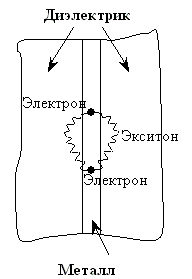
Rice 1 Sandwich for the exciton’s mechanism of superconductivity.
Pains of that, I can tell, that by development exciton’s theories of high-temperature superconductivity at calculation of wave functions electron discrepancy, therefore critical temperature the exciton’s mechanism have been admitted can reach not only room temperature, but also exceed her in some times. At that time I had opportunity to meet one of developers of the theory of high-temperature superconductivity. When has asked him, whether the intern clear distances surrounded with a thin layer диэлектрика and compressed up to intern clear distances can in structure consisting of metal balls in the size some, to arise the exciton’s mechanism of superconductivity. He has answered, in such structures it and should be observed. Since then started to create multileveled sandwich in which the basic layer had the above mentioned structure. At the end of the degree project has found out, that on several samples are available gallop of a current on volt-ampere characteristics, and their conductivity varies on the order at the certain voltage. It is shown rice2. On rice3 the typical characteristic of structures a superconductor-isolator- superconductor is resulted.
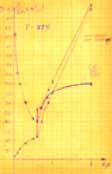
Rice 2 V.A.ch. the samples, measured in 1976y.

Rice 3 Typical v.a.ch. structures a superconductor-isolator-superconductor.
Such behaviors vach in the investigated phenomena there is only at structures a superconductor isolator a superconductor (S-I-S). Again met one of developers of the theory high-temperature, and I managed to convince him, that such characteristics can give structures S-I-S. He has not believed in these results, as they have theoretically proved what to realize in practice the exciton’s mechanism of superconductivity practically it is impossible, as metal should have thickness 5Å, and it is one nuclear layer what to receive it is impossible. But the theory is the theory and criterion of true remains practice.
Thought, that, having arrived to Voronezh on distribution, I can continue work at once. But the destiny has developed differently. And when has read clause in 1987y. about opening of superconducting ceramics where it has been written when Muller has come to Bednorz and has asked how to create the structure consisting of metal balls in the size a little bit(some) intern clear, surrounded thin layer диэлектрика and compressed up to intern clear distances. He has answered with a method of sintering of ceramics. So the superconducting ceramics critical temperature which at that time reached 112°К was born. After that has thought, that will soon reach and room temperature. The only thing, that I consoled that received samples not a method of sintering of ceramics, and a method of natural cultivation in the certain environments a little. After those messages in general has deserted superconductivity. But has passed almost twenty years from the moment of opening of superconducting ceramics, and messages on opening of superconductivity at room temperature, and was not.
In December 2002y. to me there has come an idea once again to investigate the samples made almost 30 years ago. Has come to garage, has opened a student's suitcase and has brought them in laboratory. And now that I on them have seen.
On rice 3, rice 4, rice 5, you see three schedules v.a.ch.. At the left, received in 1976y., in the center typical v.a.ch. for structures S-I-S, on the right v.a.ch. Samples measured in 2002г.

Rice 4. V.A.ch. measured in 1976г.

Rice 5. Typical v.a.ch. structures S-I-S
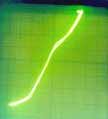
Rice 6. V.A.ch. Measured in 2002y
All of them have three characteristic sites, initial with high resistance, then at achievement of a voltage 2 Δ / e, jump of a current, and the third as at usual tunneling in structures metal-isolator-metal. But if the received characteristics are connected to the phenomenon of superconductivity there should be a critical temperature at which superconductivity disappears. At connection of samples to a source of a direct current, on v.a.ch. The loop gestirezis is observed. And the width gestirezis is function of temperature and at critical temperature becomes equal to zero. On rice 7 you see dependence of width gestirezis from temperature.

Fig. 7. Dependence of width gestirezis from temperature:
а) at 77°K, б) at 300°K, в) at 620°К.
It is possible to assume, that in such complex(difficult) layered sandwich, gestirezis can cause mobile ions. But in this case, with downturn of temperature the width gestirezis should decrease, as mobility of ions decreases. And on schedules rice 7 we see a return picture, with downturn of temperature the width gestirezis increases, that is typical only of structures S-I-S. Proceeding from these results, it is possible to draw a conclusion, that the critical temperature of transition in a superconducting condition of researched samples makes approximately 620°К. or 350°С.
If these samples possess superconductivity on them there should be effects Josephson. The method of division of a sample on a part had been allocated sites where thickness isolator between metals did not exceed 20Å. At measurement of the allocated samples on haracteriograph, at submission of a variable voltage with frequency of 50 Hz. On the screen the ellipse was observed. You see it on rice 8.

Rice. 8. An ellipse on variable voltage.
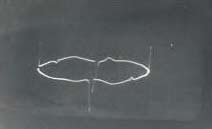
Rice. 9. An ellipse plus pulses the generator.
As to me one Moscow professor has told: the ellipse as an ellipse in it anything interesting is not present. Really it and anything interesting in the ellipse is not present the correct geometrical form. Interesting will consist in the friend how it is received on the screen haracteriograph. There are two ways of reception of an ellipse: from one source of a signal through R-C a chain or from two sources of a signal. The first variant was modeled with the help of the computer program. In process of approach of an ellipse a vertical or horizontal axis the ellipse degenerated in a direct line. And as you see on rice 8 an ellipse almost horizontal. Means, the ellipse is received with the help of two sources of a signal. If one source of a signal is haracteriograph the second source of a signal can be only a researched sample. If you look at fig. 9 on the friend haracteriograph at inclusion of the generator ступенек on an ellipse pulses of the generator ступенек are observed. The sample behaves in such a manner that what signal on it acts, such it and generates. I know that about low-frequency generation josephson’s jump, it is not known. But it is easy for checking up that who has an opportunity of work with these jumps. It is enough to connect one of superconductors through capacity and on the screen haracteriograph will observe both an ellipse and pulses and any other signal which is used in haracteriograph.
For research of samples on a direct current the capacity left. The sample was connected to haracteriograph, as to a source of a direct current. In result, at a zero voltage on a sample through it the direct current proceeded. You see it on rice 10., in superconductivity such current refers to constant superconducting a josephson’s current and is caused by tunneling cooper’s pairs at infringement their phase coherence.
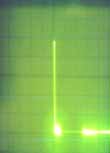
Rice. 10. Superconducting current at zero voltage on a sample

Rice. 11. Dependence superconduc ting current from magnetic field.
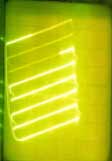
Rice. 12. Management, superconducning current
If it is a superconducting current in a magnetic field it should to allow diffraction a picture. Experiment was carried out with the help of constant magnets, thus the distance between a magnet and a sample varied. The current was measured depending on distance between a magnet and a sample. You see the received results on rice 11. The inclination to the left, according to the theory of superconductivity, is connected to addition of own magnetic field to an external field that occurs at the big currents through transition. I want to tell at once, that at research separately each layer of which will consist сандвич, by any of the resulted characteristics it was not observed. Therefore, it is possible to assume, that formation cooper’s pairs occurs through interaction electrons in the basic layer, to particles in the other layer. Probably it is the exciton’s mechanism. And if it so with the help of the additional metal electrode existing in sandwich by a superconducting current it is easy to operate. At submission on an additional electrode of pulses of the generator a steps on the screen haracteriograph there was a family of target characteristics. You see it on rice. 12. It reminds family of target characteristics of the transistor. Therefore with the help of effect of management of a superconducting current it is possible to create active elements for transformation and amplifications of electric signals. Devices created on this effect can work at temperatures from 0°К. up to 620°К. and on frequencies from above 100giga. Thus, on rice 12 you see characteristics of the first superconducting active device for transformation and amplifications of electric signals.
And now about research of absorption and radiation V.H.F. electromagnetic waves. The sample was connected to the haracteriograph, as to a source of a voltage. Initial site the josephson’s jump you see an initial site on rice. 13.
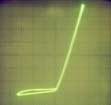
Rice13. Initial site v.a.ch.

Rice. 14.V.A.ch. at influence V.H.F. electromagnetic waves.

Rice. 15. Structure of bases a layer.
In the beginning of a site it is observed gestirezis which width depends on a magnetic field. At imposing a magnetic field the width gestirezis increases. This josephson’s jump was exposed to influence V.H.F. electromagnetic waves, and results are submitted on rice. 14. As you see, as a result of absorption of electromagnetic waves the horizontal step was formed. The size of this step in volts is connected to frequency of an irradiation, a charge electron and Planck's constant. Preliminary measurements and calculations of a constant of Planck show, that its value coincides with tabulated value with accuracy of 0.02 percent. The calibrated measuring devices are necessary for increase of accuracy. And now about radiation of electromagnetic waves. If to increase a current proceeding through a sample above a surface plasma balls of red - violet color are formed that corresponds(meets) to plasma of air. It occurs, when intensity radiation V.H.F. electromagnetic waves reaches values sufficient for ionization of molecules of air. As a result of formation of plasma balls on a surface of a sample the trace which slightly opens structure of a material of the basic layer сандвича is formed. You see it on rice. 15. The photo is made at very big increase, therefore clearness not so good.
And now we shall discuss the received results. I had to meet scientists and experts. Some from them try to explain the received results the contact phenomena, the truth, do not speak with what. Therefore to an occasion I want to tell, similar, they badly represent characteristics of the contact phenomena and the more so tunnel phenomena in structures S-I-S. Others agree, that all resulted characteristics correspond to structures S-I-S, but for acknowledgement(confirmation) of superconductivity it is necessary to measure a diamagnetic susceptibility of samples as at transition in a superconducting condition all materials become strong diamagnetic. With it I agree. But let's approach to this question on the other hand. We admit, we are engaged in researches of diamagnetic properties of materials, we do not know those results which are resulted in this work and to us these structures get. We find out on them at room temperature strong diamagnetism, as in superconductors. We can assert, what it is superconductivity? Certainly, no, as the basic property of superconductivity when resistance of a conductor becomes equal to zero. If you look at fig. 10 there at a zero voltage on a sample the current proceeds. And it just also confirms that resistance of a sample equally to zero. Besides all josephson’s effects are connected only to tunneling cooper’s pairs, and in researched samples we notice practically all effects Josephson. Means it is possible to assert, that in researched samples exist cooper’s pairs, and existence cooper’s pairs this basic condition of occurrence of superconductivity, according to theory B.C.Ph.. During researches the critical temperature and a current are found out, and samples in a magnetic field behave the same as also structures a superconductor-isolator-superconductor. Therefore, there are no doubts that the metal ball surrounded with a thin layer диэлектрика, are in a condition of superconductivity at room temperature and is higher. And diamagnetic researches of samples we shall lead, as soon as the opportunity will appear. But there is no doubt, that diamagnetic properties of samples will be same, as at usual superconductors as in the nature there are no two different phenomena showing identical properties. Thanks for attention. I shall be, it is grateful to everyone who can support and the help in this work.
The literature:
1. Ginzburg V.L., Kirzhnic D.A. Problem of high-temperature superconductivity. M.: the Science, 1977. - 400 with.
2. Buckel V. Superconductivity. - M.: the World, 1975.-364 with.
3. Solymar L. Superconductive tunneling and application. - M.: the World, 1974.-428 with.
4. Derunov V. Site www.derunov.narod.ru